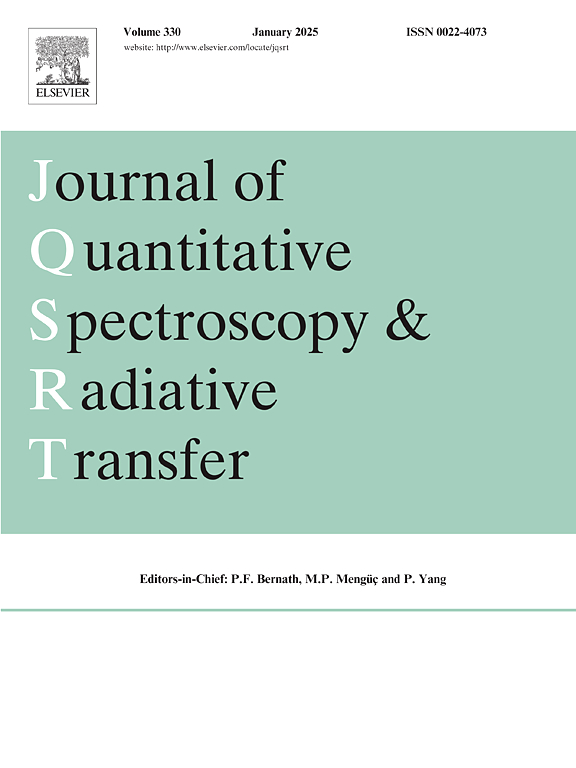An algorithm for solving the inverse problem in total internal reflection microscopy
IF 2.3
3区 物理与天体物理
Q2 OPTICS
Journal of Quantitative Spectroscopy & Radiative Transfer
Pub Date : 2025-06-07
DOI:10.1016/j.jqsrt.2025.109534
引用次数: 0
Abstract
The inverse problem encountered in total internal reflection microscopy is particularly challenging due to the complex relationship between the data and the state vector. To address the computational difficulties and compute all possible solutions to this inverse problem, we propose an algorithm for solving problems of the form , where is a nonlinear and continuous forward model, is the state vector, and is the data vector. The forward model is computationally expensive, lacks derivatives, and is treated as a black-box function, with no prior information available about the statistical properties of , aside from a box constraint. Additionally, the data vector is affected by uncertainties, making the retrieval of accurate solutions more challenging. To address these issues, the algorithm incorporates a neural network-based surrogate model to reduce computational costs and manage the absence of derivatives. A whitening transformation is applied to handle isotropic noise, and the residual is minimized within simple bounds. The method is further enhanced by a multistart solver that generates starting points through a hitting set problem, improving the exploration of the solution space and increasing the likelihood of finding all solutions. The solver iterates over the absolute function tolerance to identify both global and local minima, minimizes a least-squares function while adhering to simple bounds on variables during the local search phase, and includes a double box stopping rule. Additionally, the algorithm employs various sampling techniques and optimization methods, with the covariance matrix estimated using either a standard analytical approach or a Monte Carlo analysis.
全内反射显微镜反问题的一种求解算法
由于数据和状态向量之间的复杂关系,在全内反射显微镜中遇到的逆问题尤其具有挑战性。为了解决计算困难并计算该逆问题的所有可能解,我们提出了一种求解形式为F(x)=y的问题的算法,其中F是非线性连续前向模型,x是状态向量,y是数据向量。前向模型在计算上很昂贵,缺乏导数,并且被视为一个黑盒函数,除了盒子约束之外,没有关于x的统计特性的先验信息。此外,数据向量y受到不确定性的影响,使得准确解的检索更具挑战性。为了解决这些问题,该算法结合了基于神经网络的代理模型,以降低计算成本并管理缺乏衍生品的情况。采用白化变换处理各向同性噪声,使残差在简单范围内最小化。该方法进一步增强了多起点求解器,该多起点求解器通过命中集问题生成起点,改进了解空间的探索,增加了找到所有解的可能性。求解器迭代绝对函数容限以识别全局和局部最小值,在局部搜索阶段使最小二乘函数最小化,同时坚持变量的简单边界,并包括双框停止规则。此外,该算法采用各种采样技术和优化方法,使用标准分析方法或蒙特卡罗分析估计协方差矩阵。
本文章由计算机程序翻译,如有差异,请以英文原文为准。
求助全文
约1分钟内获得全文
求助全文
来源期刊
CiteScore
5.30
自引率
21.70%
发文量
273
审稿时长
58 days
期刊介绍:
Papers with the following subject areas are suitable for publication in the Journal of Quantitative Spectroscopy and Radiative Transfer:
- Theoretical and experimental aspects of the spectra of atoms, molecules, ions, and plasmas.
- Spectral lineshape studies including models and computational algorithms.
- Atmospheric spectroscopy.
- Theoretical and experimental aspects of light scattering.
- Application of light scattering in particle characterization and remote sensing.
- Application of light scattering in biological sciences and medicine.
- Radiative transfer in absorbing, emitting, and scattering media.
- Radiative transfer in stochastic media.

 求助内容:
求助内容: 应助结果提醒方式:
应助结果提醒方式:


